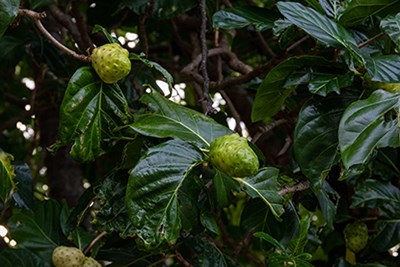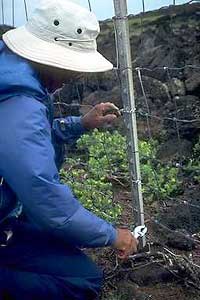Native PlantsIt is amazing to consider how plants arrived in Hawai`i, the most isolated major island chain in the world. Over millions of years following their formation by volcanoes, these islands, stretching over 1,500 miles, were slowly populated by plants arriving over vast distances—blown by the wind, carried in the stomachs of a few animals, or carried by sea. Twenty-four hundred miles from the nearest continent or island group, the Hawaiian Islands are known for their ecological diversity and endemic flora. Around 95 percent of native Hawaiian plants are found nowhere else in the world, having evolved here on the islands following colonization by their ancestors. 
NPS Photos 
NPS / Hannah Schwalbe Polynesian PlantsPolynesian plant introductions can be found on the peninsula and throughout Kalaupapa settlement. These plants are also called “canoe plants” because the Polynesians brought these plants via canoes to help sustain their settlements on the Hawaiian Islands. 
NPS photo. Invasive SpeciesInvasive, non-native plants are a severe problem throughout the state of Hawai`i. Within the park the predominant alien vegetation is Christmas berry, koa haole, and lantana. These aliens threaten the remaining native and endemic vegetation. |
Last updated: December 14, 2022
